Computational Analysis of Machining Induced Stress Distribution during Dry and Cryogenic Orthogonal Cutting of 7075 Aluminium Closed Cell Syntactic Foams
- PMID: 36677235
- PMCID: PMC9866457
- DOI: 10.3390/mi14010174
Computational Analysis of Machining Induced Stress Distribution during Dry and Cryogenic Orthogonal Cutting of 7075 Aluminium Closed Cell Syntactic Foams
Abstract
The addition of hollow aluminium oxide bubbles to the 7075 aluminium matrix results in a lightweight syntactic foam with a reduced density and an increased peak compression strength. The presence of ceramic bubbles also aids in a reduced coefficient of thermal expansion and thermal conductivity in comparison to aluminium alloys. In spite of their enhanced material properties, the inclusion of hollow aluminium oxide bubbles presents the challenge of poor machinability. In order to elucidate the problem of poor surface machinability, an attempt has been made to develop a thermo-mechanical finite element machining model using AdvantEdgeTM software with which surface quality and machined syntactic foam material can be analyzed. If the novel model developed is combined with virtual reality technology, CNC technicians can observe the machining results to evaluate and optimize the machining program. The main novelty behind this software is that the material foam is assumed as a homogeneous material model for simplifying the material model as a complex heterogeneous material system. The input parameters used in this study are cutting speed, feed, average size and volume fraction of hollow aluminium oxide bubbles, and coolant. For the output parameters, the numerical analysis showed a 6.24% increase in peak tensile machining induced stress as well as a 51.49% increase in peak cutting temperature as cutting speed (25 m/min to 100 m/min) and uncut chip thickness (0.07 mm to 0.2 mm) were increased. The average size and volume fraction of hollow aluminium oxide bubbles showed a significant impact on the magnitude of cutting forces and the depth of tensile induced stress distribution. It was observed on the machined surface that, as the average size of hollow aluminium oxide bubbles became coarser, the peak machining induced tensile stress on the cut surface reduced by 4.47%. It was also noted that an increase in the volume fraction of hollow aluminium oxide bubbles led to an increase in both the peak machining induced tensile stress and the peak cutting temperature by 29.36% and 20.11%, respectively. This study also showed the influence of the ceramic hollow bubbles on plastic deformation behavior in 7075 aluminium matrix; the machining conditions for obtaining a favorable stress distribution in the machined surface and sub-surface of 7075 closed cell syntactic foam are also presented.
Keywords: FE model; aluminum; machining; surface integrity; syntactic foam.
Conflict of interest statement
The authors declare no conflict of interest.
Figures



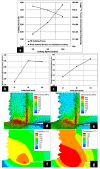
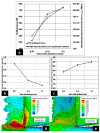
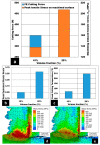
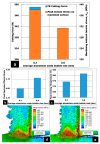




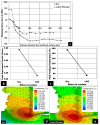
References
-
- Movahedi N., Murch G.E., Belova I.V., Fiedler T. Manufacturing and Compressive Properties of Tube-Filled Metal Syntactic Foams. J. Alloys Compd. 2020;822:153465. doi: 10.1016/j.jallcom.2019.153465. - DOI
-
- Orbulov I.N., Szlancsik A., Kemény A., Kincses D. Compressive Mechanical Properties of Low-Cost, Aluminium Matrix Syntactic Foams. Compos. Part A Appl. Sci. Manuf. 2020;135:105923. doi: 10.1016/j.compositesa.2020.105923. - DOI
-
- Fragoso-Medina O., Velázquez-Villegas F. Aluminum Foam to Improve Crash Safety Performance: A Numerical Simulation Approach for the Automotive Industry. Mech. Based Des. Struct. Mach. 2021:1–15. doi: 10.1080/15397734.2021.1927076. - DOI
-
- Orbulov I.N., Kemény A., Filep Á., Gácsi Z. Compressive Characteristics of Bimodal Aluminium Matrix Syntactic Foams. Compos. Part A Appl. Sci. Manuf. 2019;124:105479. doi: 10.1016/j.compositesa.2019.105479. - DOI
-
- Thiyagarajan R., Senthil Kumar M. A Review on Closed Cell Metal Matrix Syntactic Foams: A Green Initiative towards Eco-Sustainability. Mater. Manuf. Process. 2021;36:1333–1351. doi: 10.1080/10426914.2021.1928696. - DOI
Grants and funding
LinkOut - more resources
Full Text Sources

